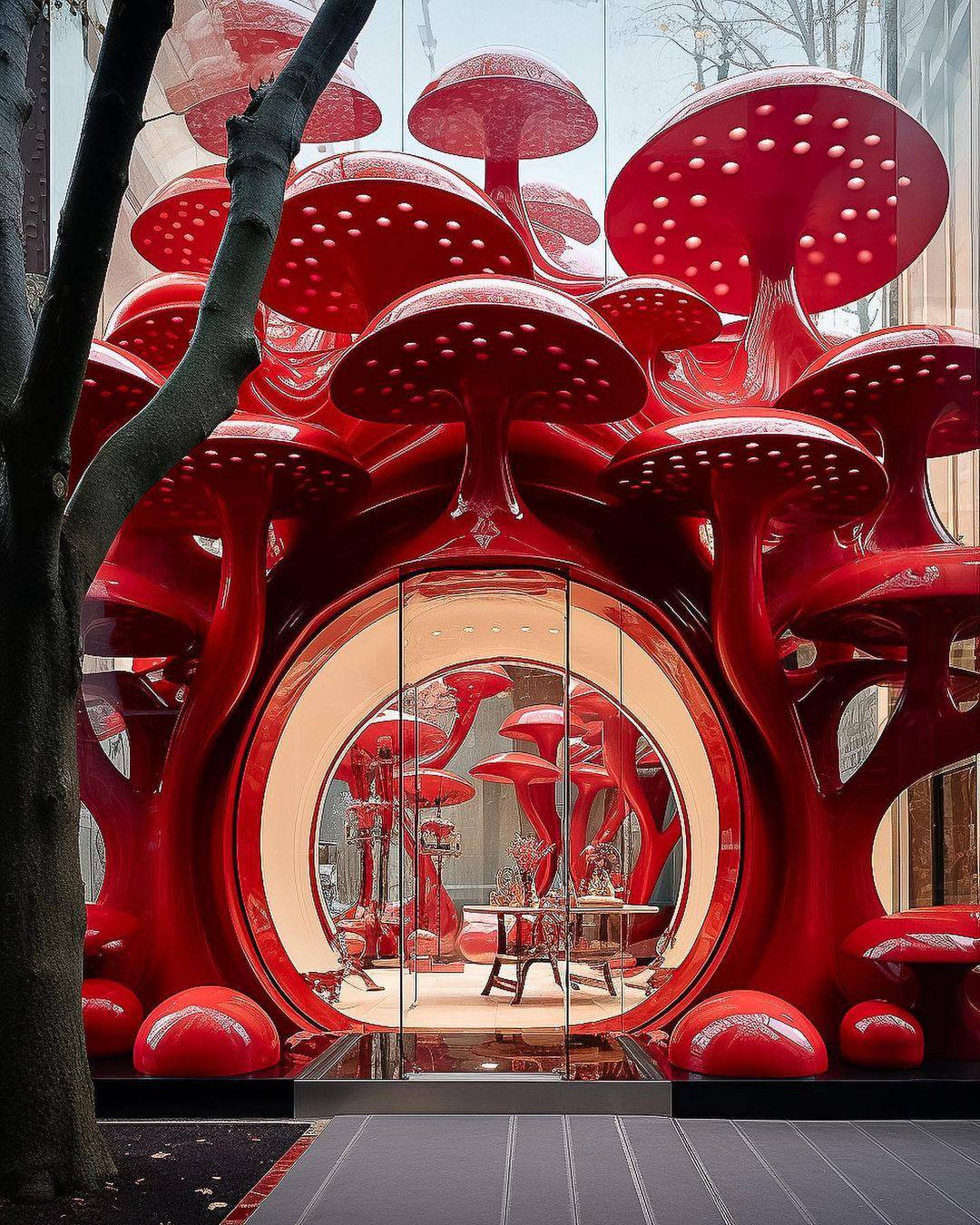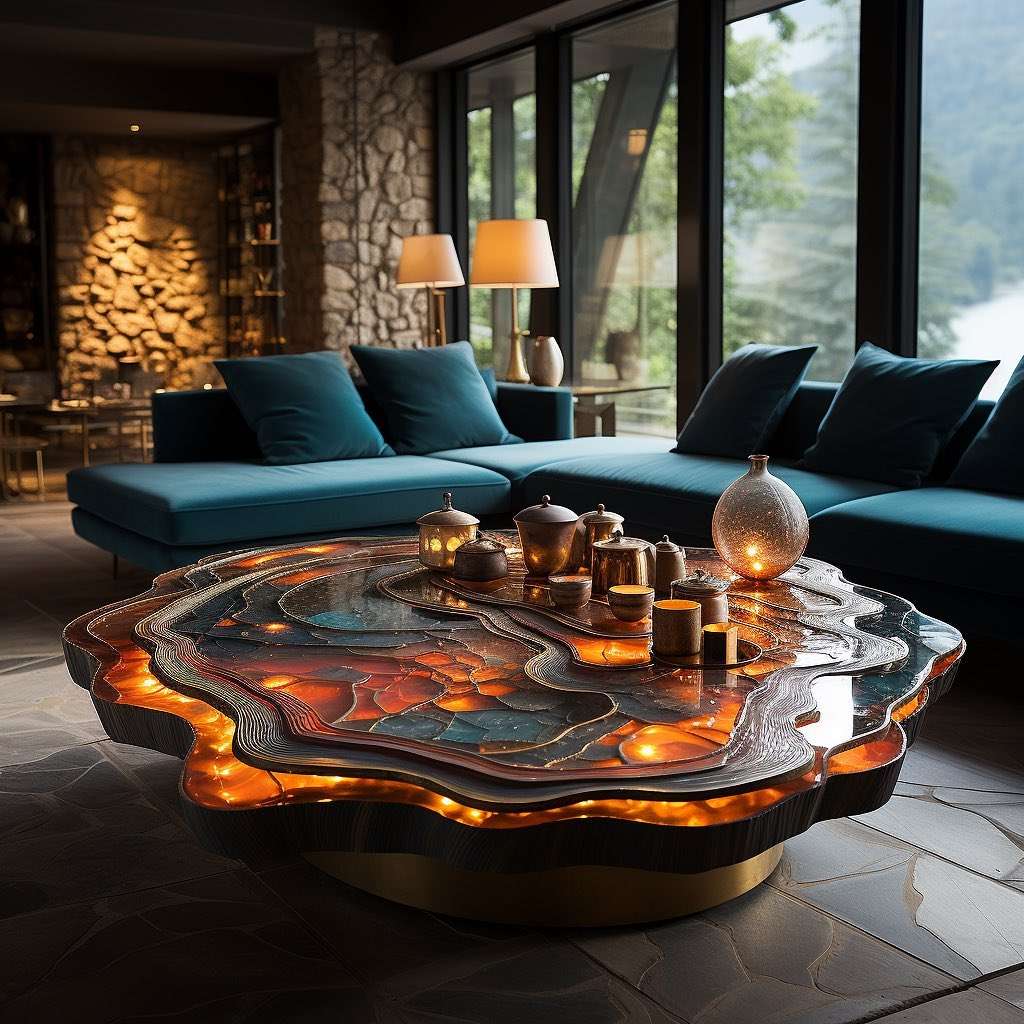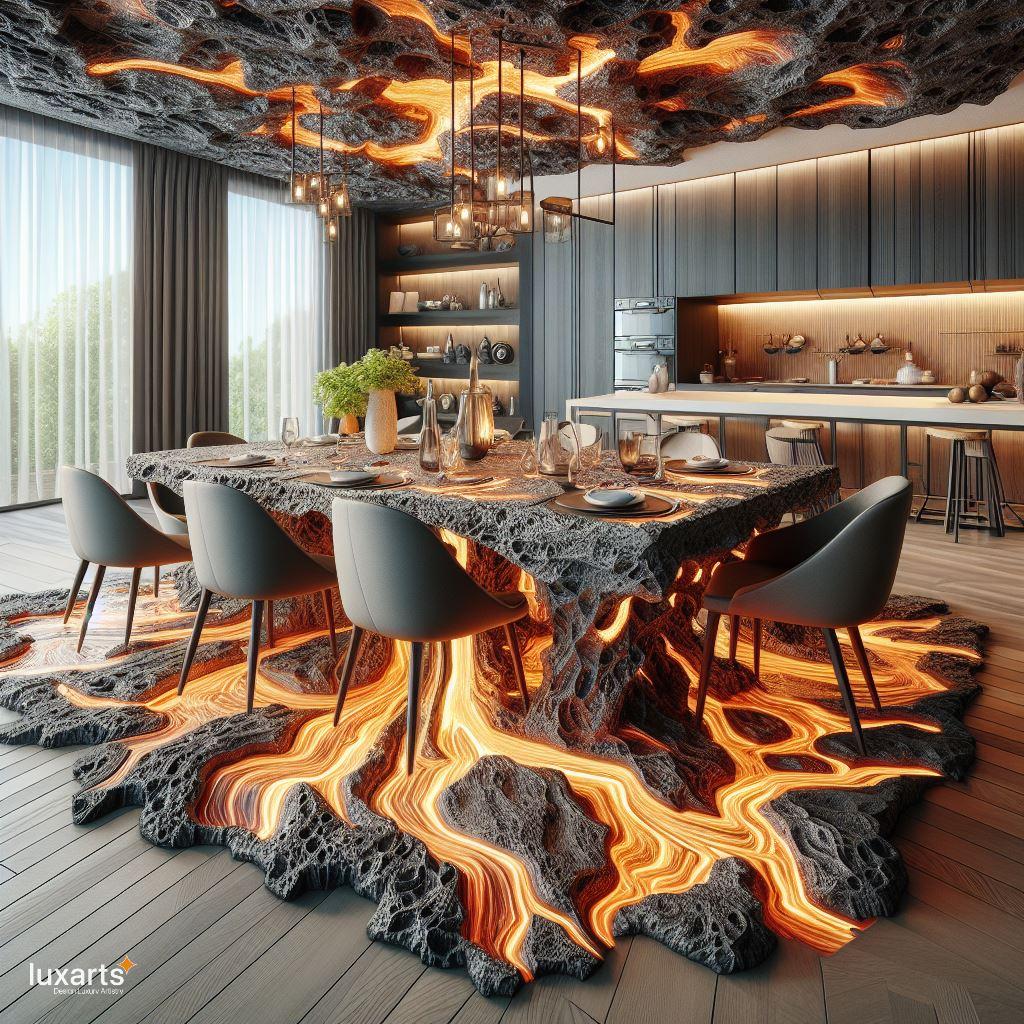The world of architecture is constantly evolving, with designers and architects pushing the boundaries of traditional design to create unique and innovative structures. One such example is the mushroom house, a type of architectural design that draws inspiration from the intricate and elegant forms of mushrooms. This unconventional approach to architecture has gained popularity in recent years, with its organic and sustainable features capturing the attention of both designers and homeowners alike. In this blog post, we will explore the concept of the mushroom house, its unique features, and the significance of drawing inspiration from nature in architectural design. 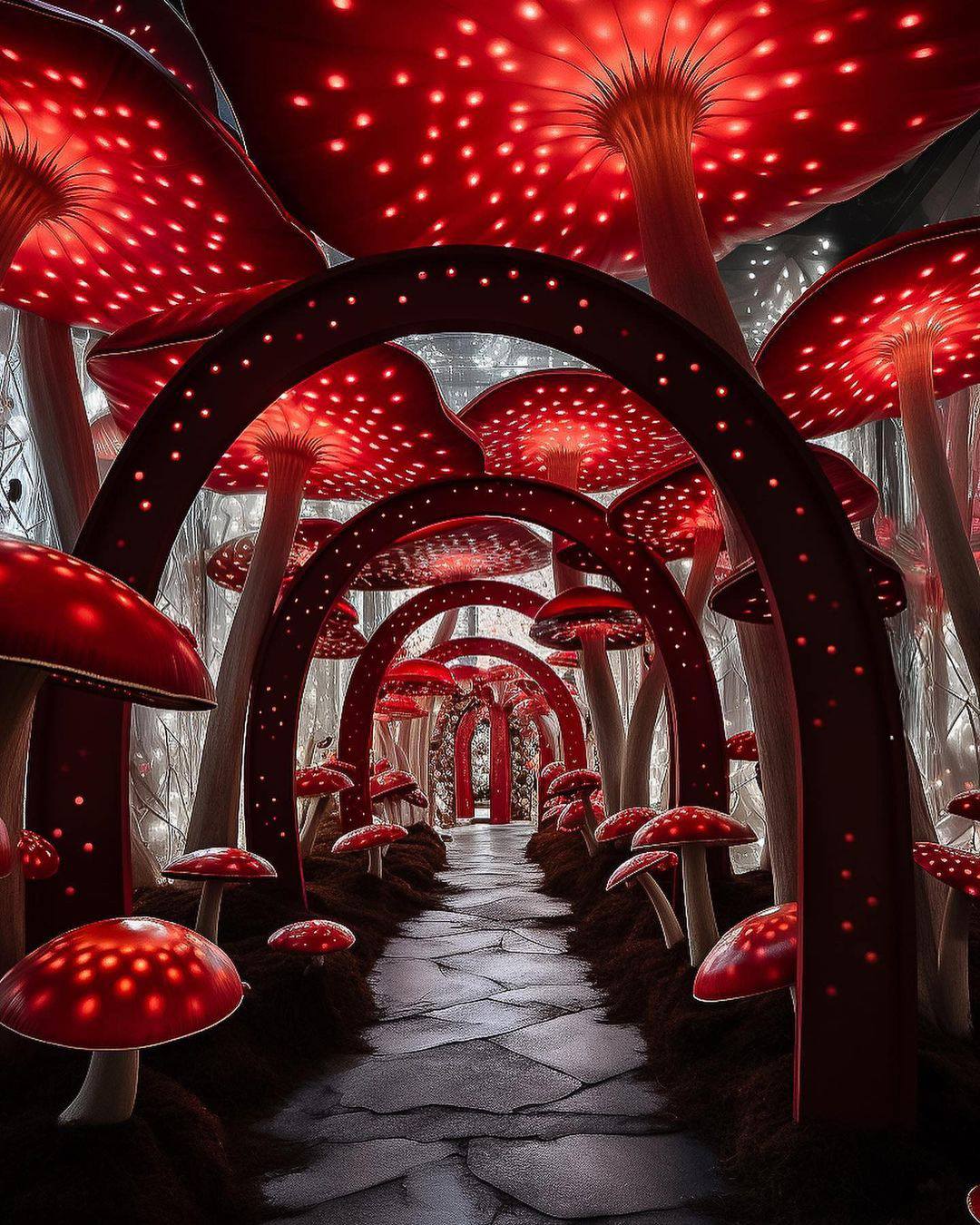
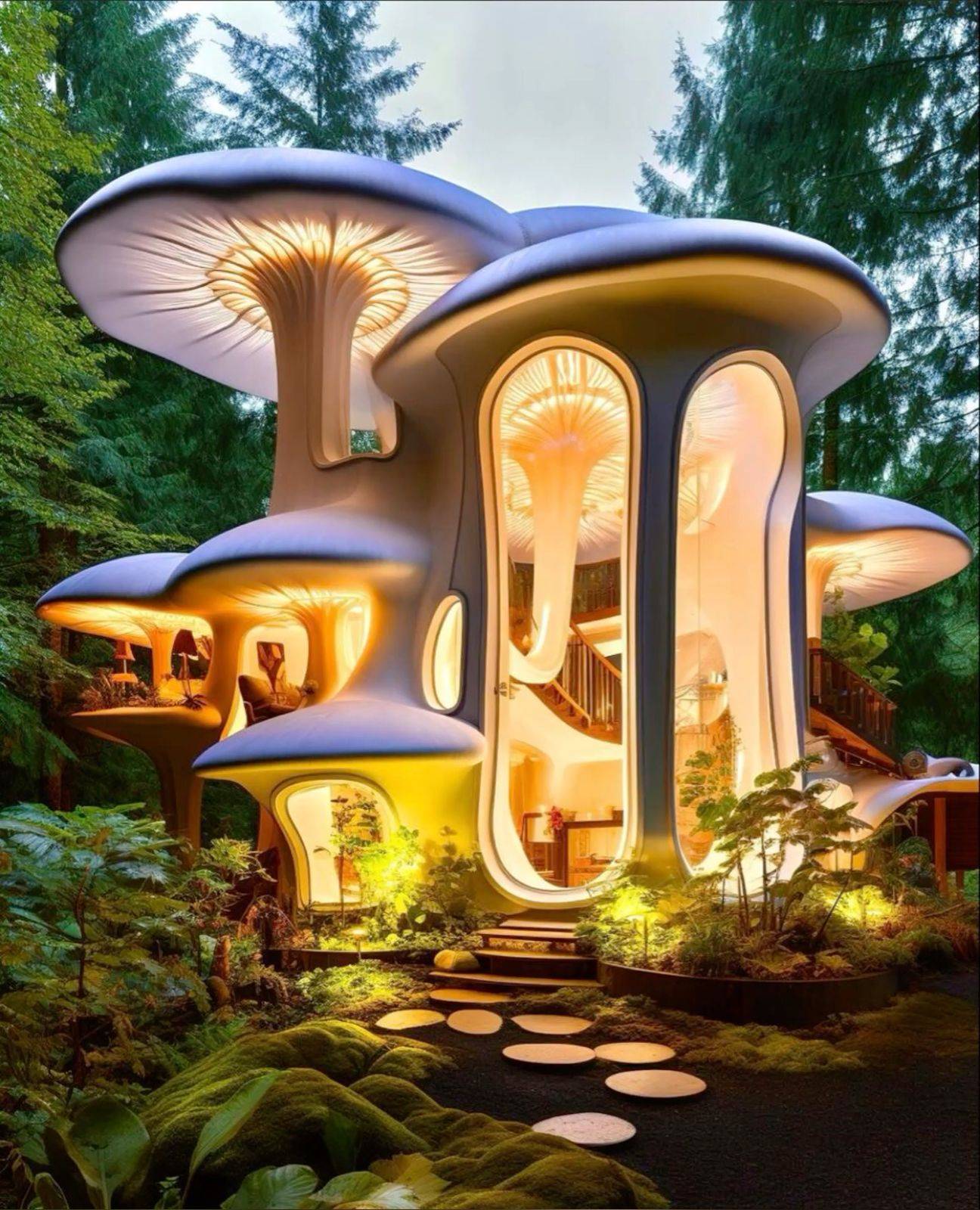
Introduction to the Mushroom House
The mushroom house, also known as the “mushroom dome,” is a type of architectural design that mimics the shape and form of mushrooms. These structures are characterized by their curved roofs, often resembling the cap of a mushroom, and their use of natural materials such as wood and stone. The concept of the mushroom house was first introduced by architect James H. Johnson in the 1970s, but it has gained popularity in recent years due to its unique and sustainable features. The idea behind the mushroom house is to create a harmonious blend between architecture and nature. By drawing inspiration from the organic shapes and patterns found in mushrooms, architects are able to create structures that seamlessly integrate into their surroundings. This not only creates a visually appealing design but also promotes sustainability and environmental consciousness. 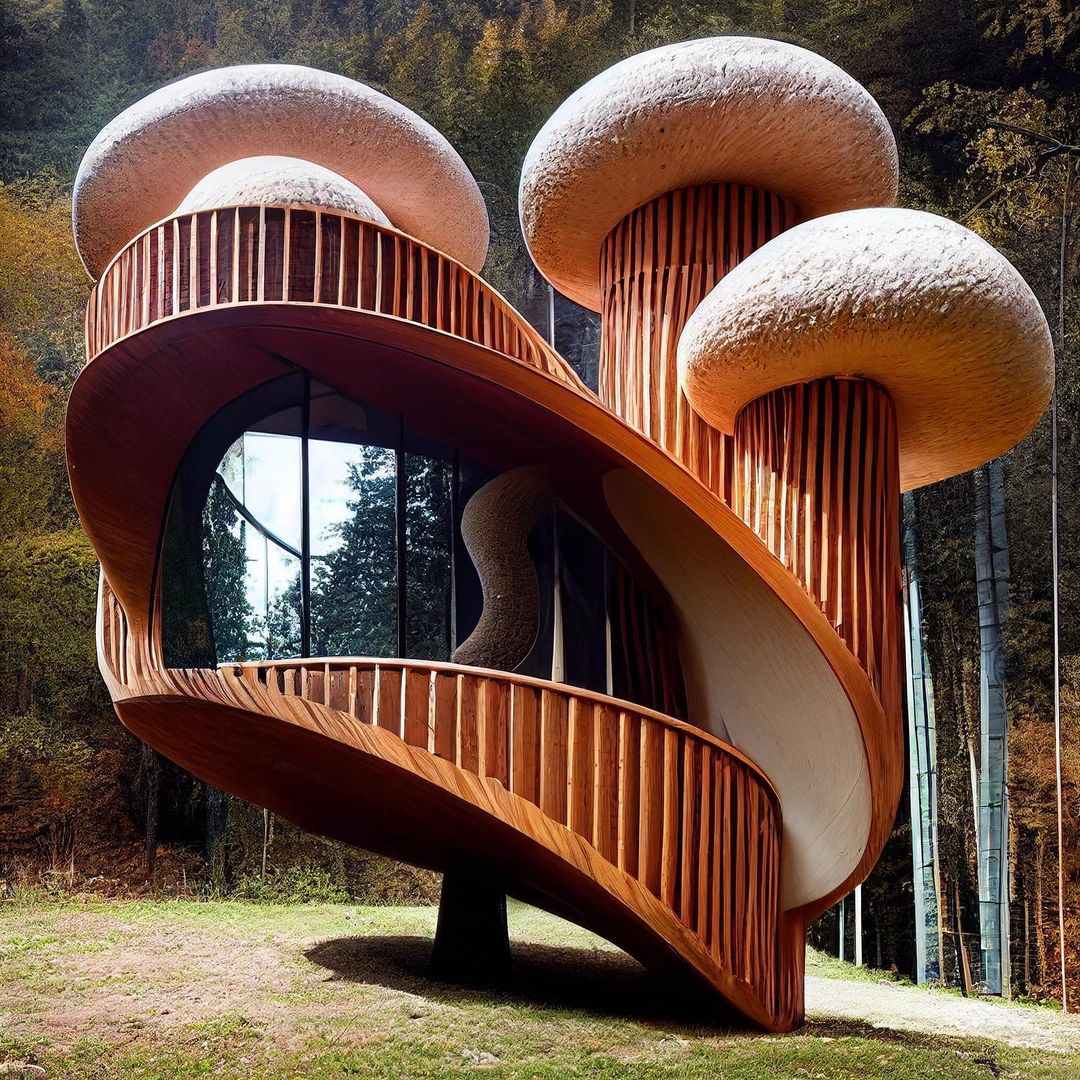
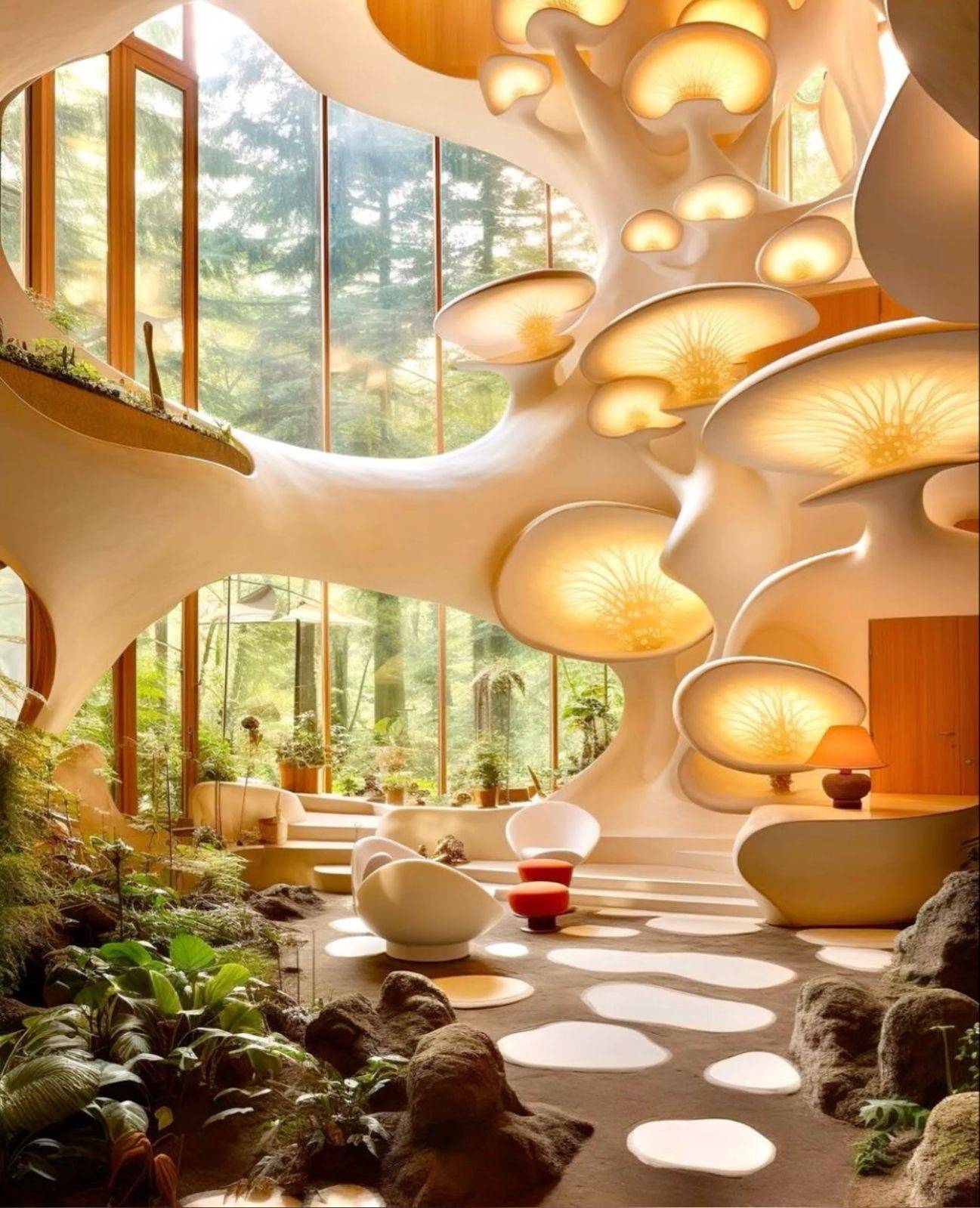
Architecture and Design of the Mushroom House
The architecture and design of the mushroom house are heavily influenced by the natural form of mushrooms. The most prominent feature of these structures is their curved roofs, which resemble the cap of a mushroom. The use of curves and arches in the design creates a sense of fluidity and movement, giving the structure an organic and natural feel.  In addition to the curved roofs, the mushroom house also incorporates other elements found in mushrooms, such as the use of natural materials. Wood, stone, and other organic materials are commonly used in the construction of these houses, further emphasizing the connection to nature. The interior design of the mushroom house also follows a similar theme, with curved walls and natural materials creating a sense of harmony and balance.
In addition to the curved roofs, the mushroom house also incorporates other elements found in mushrooms, such as the use of natural materials. Wood, stone, and other organic materials are commonly used in the construction of these houses, further emphasizing the connection to nature. The interior design of the mushroom house also follows a similar theme, with curved walls and natural materials creating a sense of harmony and balance. 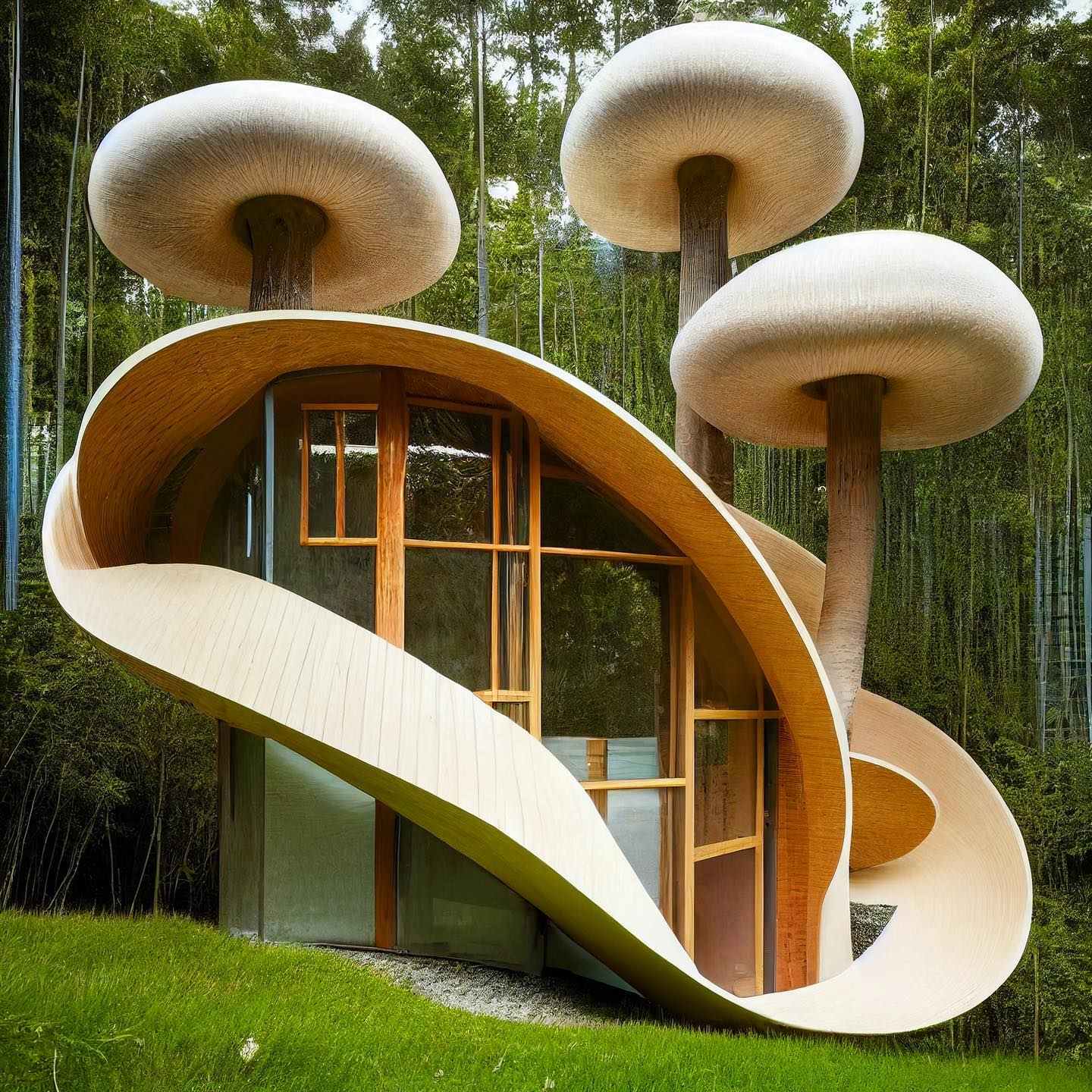
Drawing Inspiration from Nature for Mushroom-Inspired Architectural Space Design
The concept of drawing inspiration from nature is not new in architecture. In fact, many architectural designs throughout history have been influenced by natural forms and patterns. However, the mushroom house takes this concept to a whole new level by directly mimicking the shape and form of mushrooms. One of the main reasons for drawing inspiration from nature in architectural design is to create a more sustainable and environmentally friendly structure. By incorporating natural elements into the design, architects are able to reduce the carbon footprint of the building and promote a more eco-friendly lifestyle. Additionally, the use of natural materials can also improve the indoor air quality and create a healthier living space for the occupants.
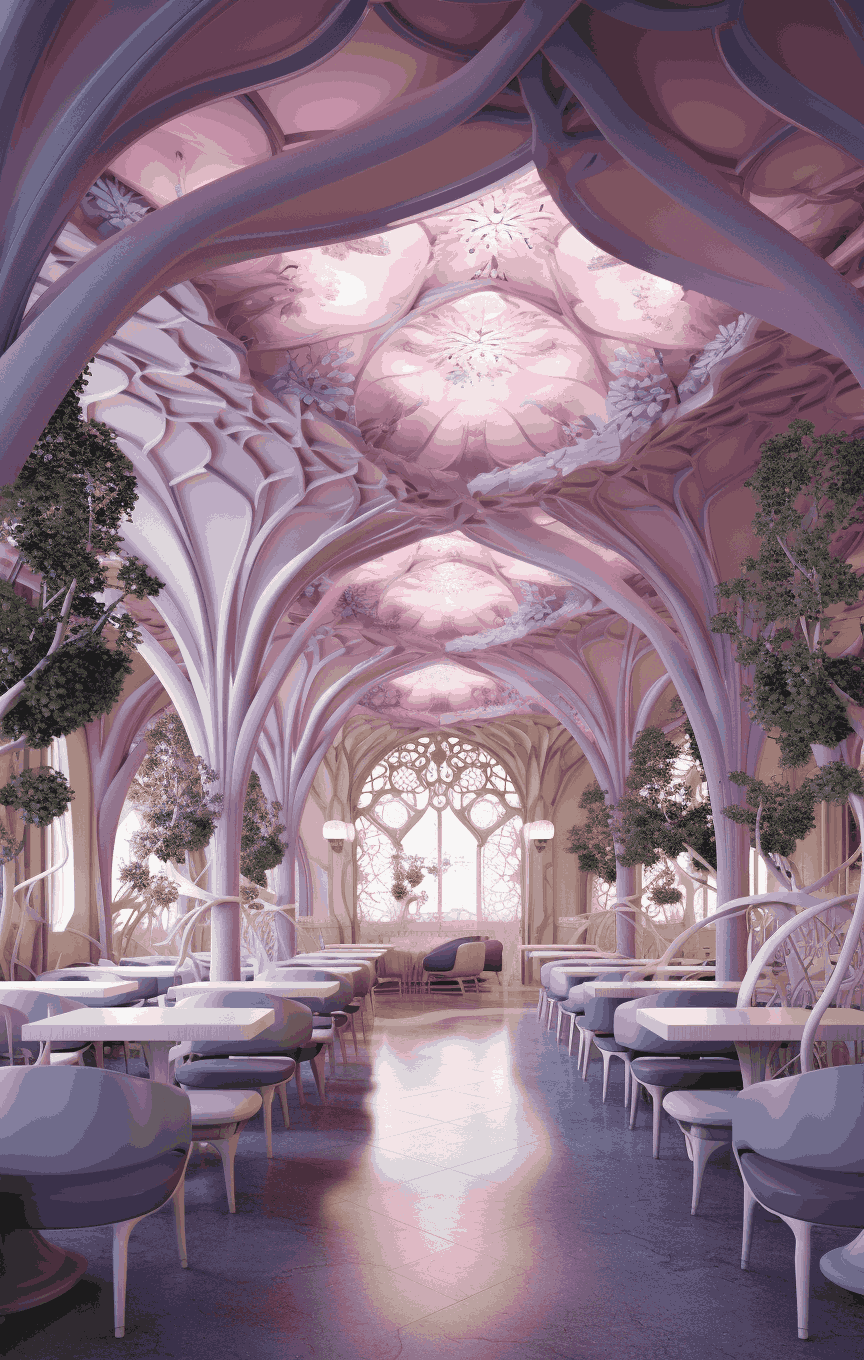
Read more: Mushroom Beds: Dreamy Designs Inspired by Nature’s Fungi
Another reason for drawing inspiration from nature is to create a unique and visually appealing design. The intricate and elegant forms of mushrooms provide a rich source of inspiration for architects, allowing them to create structures that stand out from traditional designs. This approach to architectural design also promotes creativity and innovation, pushing the boundaries of what is considered conventional. 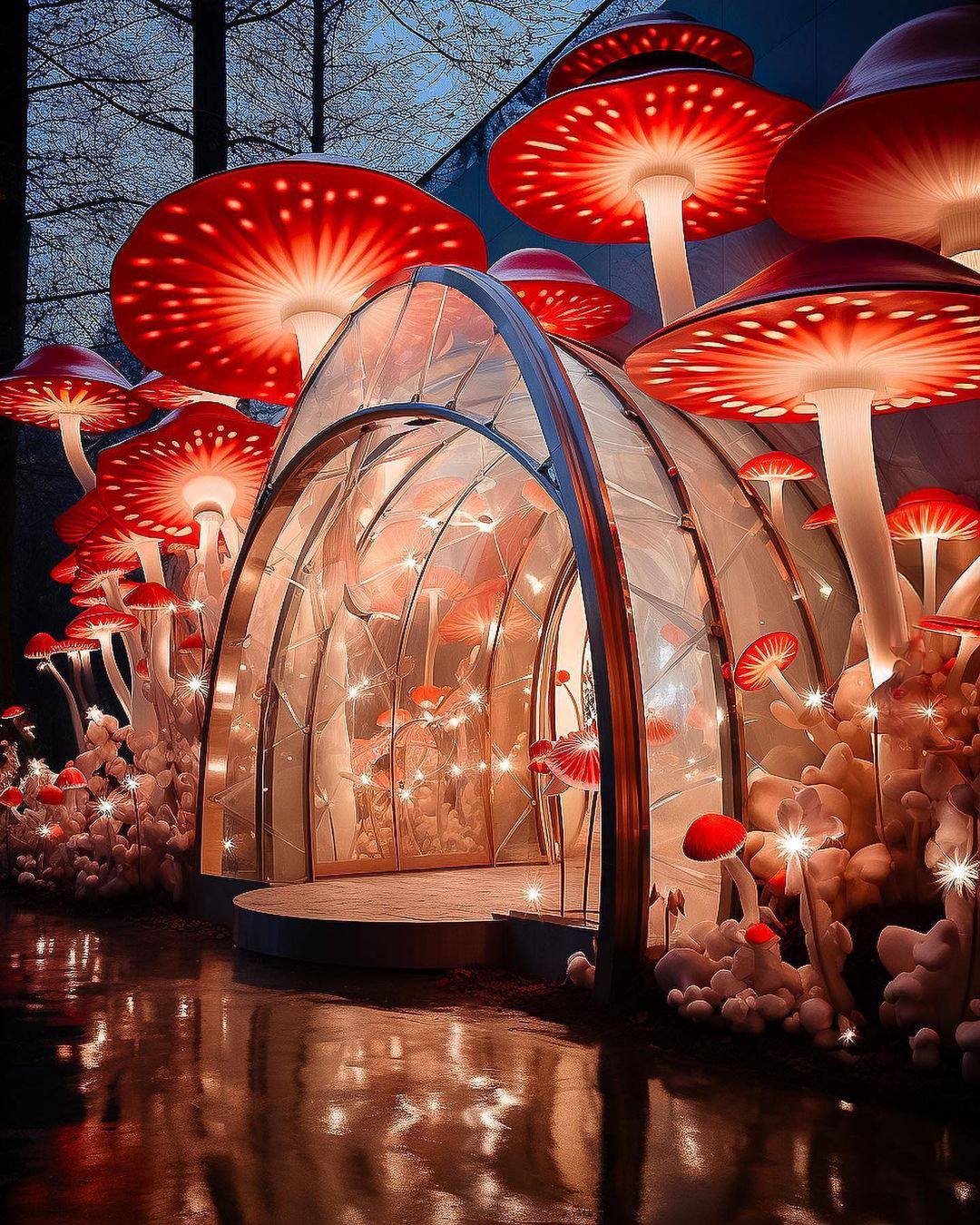
The Significance of Drawing Inspiration from Mushrooms in Architectural Design
Mushrooms have long been associated with sustainability and environmental consciousness. They play a crucial role in the ecosystem, breaking down organic matter and recycling nutrients back into the soil. This same concept is reflected in the design of the mushroom house, where natural materials are used to create a structure that blends in with its surroundings and promotes sustainability. 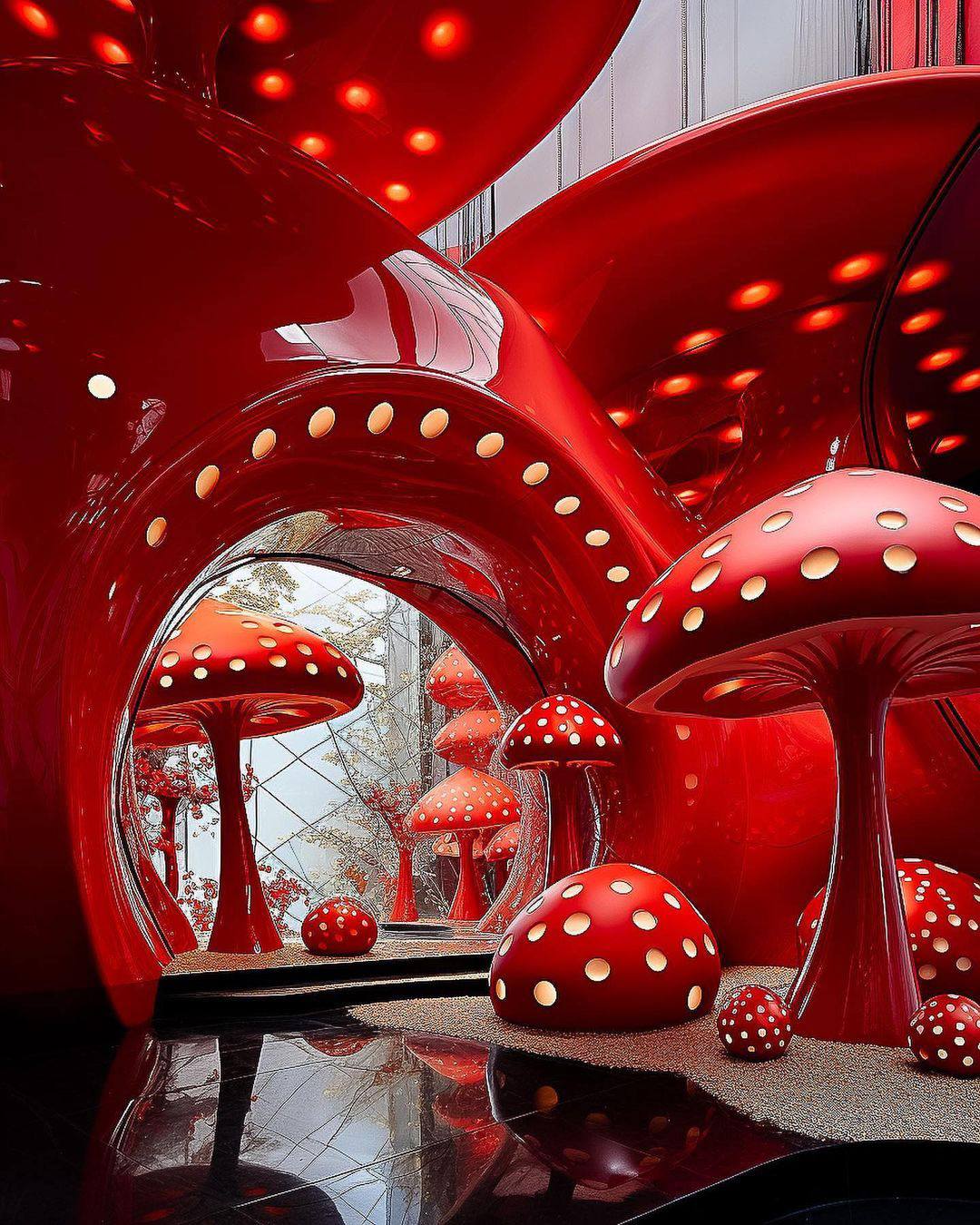 Moreover, mushrooms have a unique and intricate structure that has captivated scientists and artists alike. The complex network of mycelium, the root-like structure of mushrooms, has been compared to the internet, with its ability to connect and communicate with other organisms. This same concept is reflected in the design of the mushroom house, where different spaces are connected through curved walls and arches, creating a sense of unity and harmony. Drawing inspiration from mushrooms also promotes a deeper connection with nature. In today’s fast-paced world, it is easy to become disconnected from the natural world. By incorporating elements of nature into architectural design, we are reminded of our place in the ecosystem and the importance of preserving the environment for future generations.
Moreover, mushrooms have a unique and intricate structure that has captivated scientists and artists alike. The complex network of mycelium, the root-like structure of mushrooms, has been compared to the internet, with its ability to connect and communicate with other organisms. This same concept is reflected in the design of the mushroom house, where different spaces are connected through curved walls and arches, creating a sense of unity and harmony. Drawing inspiration from mushrooms also promotes a deeper connection with nature. In today’s fast-paced world, it is easy to become disconnected from the natural world. By incorporating elements of nature into architectural design, we are reminded of our place in the ecosystem and the importance of preserving the environment for future generations. 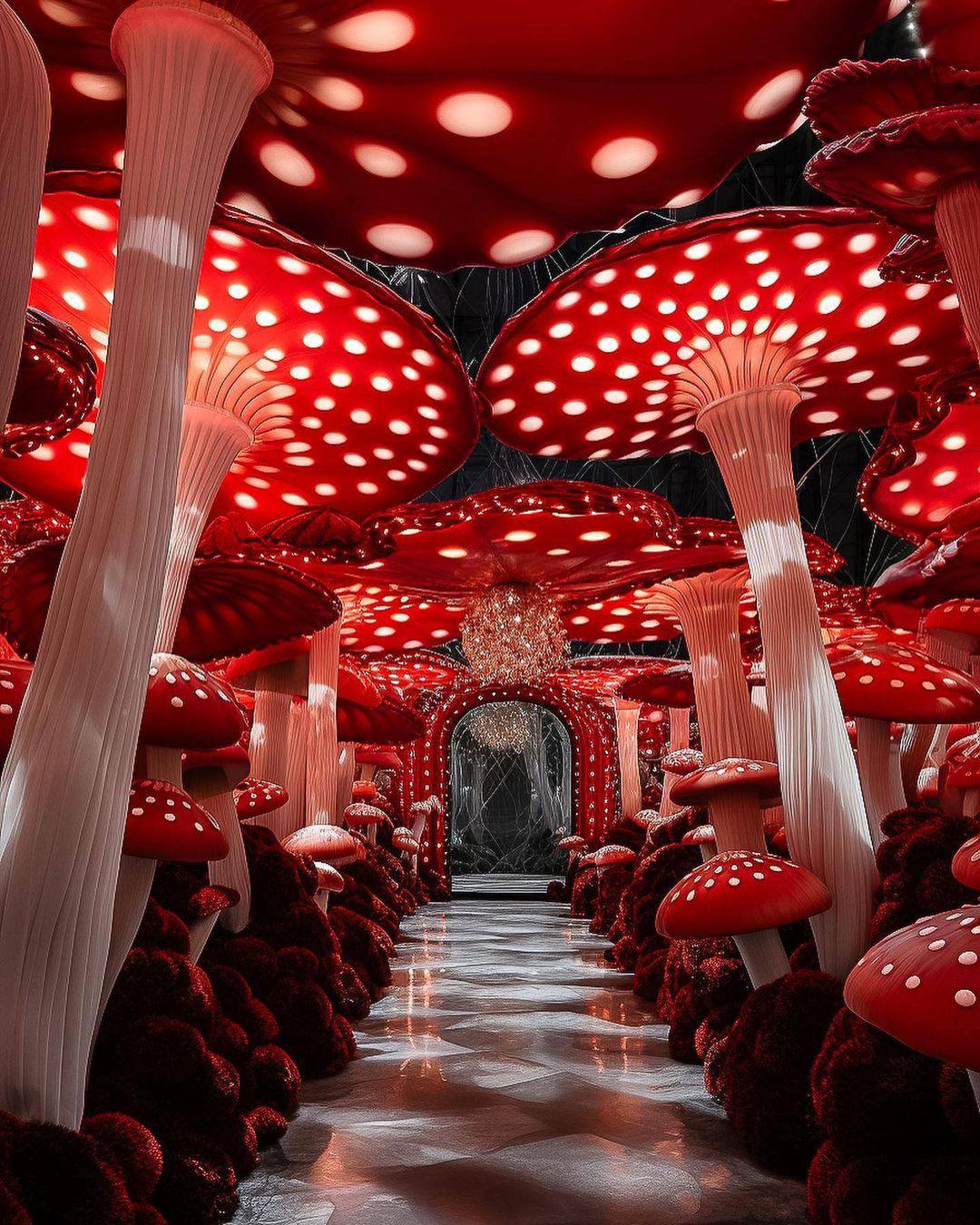
Unique Features of the Mushroom House
The mushroom house is not just visually appealing, but it also offers unique features that set it apart from traditional architectural designs. One of the most notable features is its energy efficiency. The curved roofs of the mushroom house allow for better air circulation, reducing the need for artificial cooling and heating systems. Additionally, the use of natural materials helps to regulate the temperature inside the house, further reducing energy consumption. 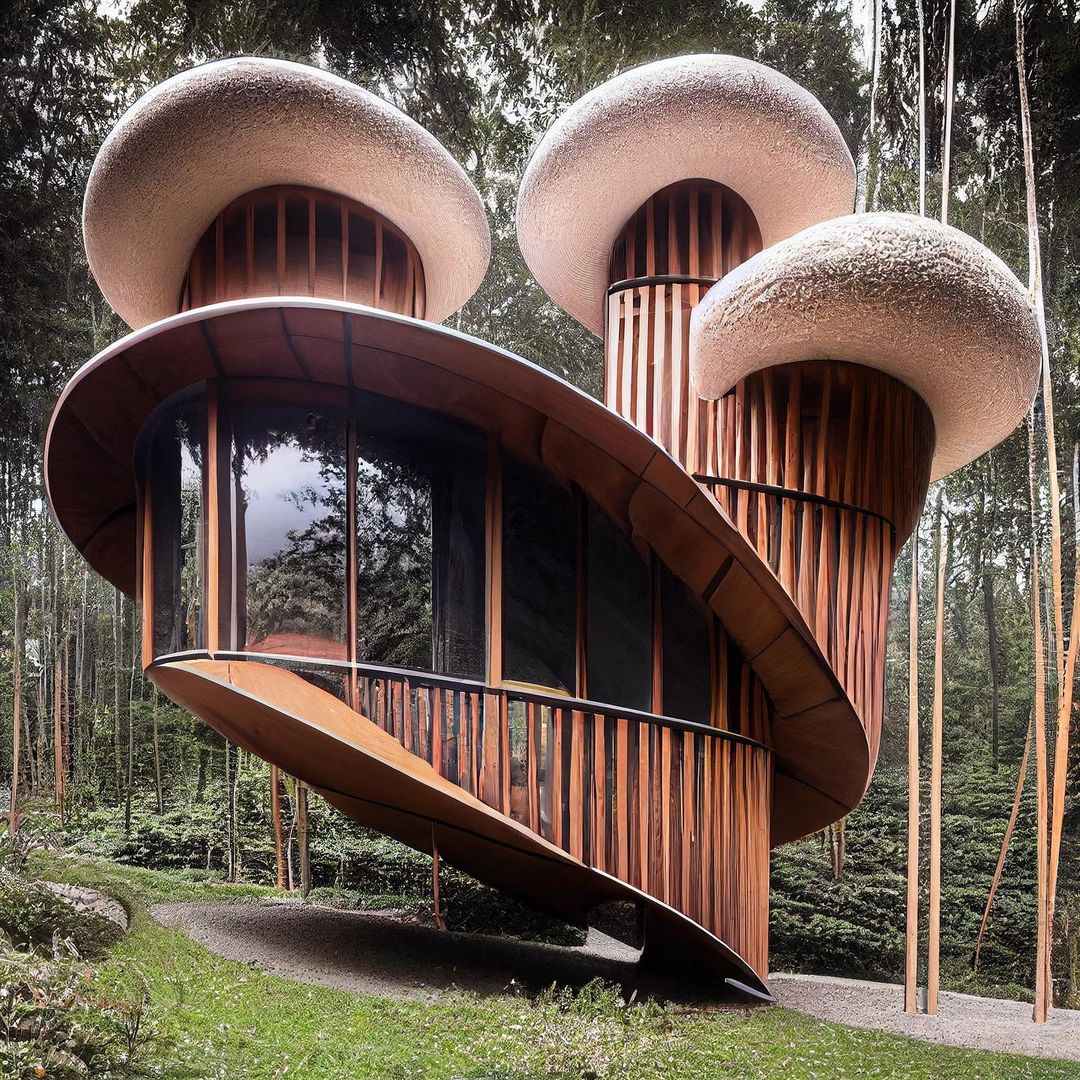 Another unique feature of the mushroom house is its ability to blend in with its surroundings. The curved and organic forms of these structures make them appear as if they have grown naturally out of the ground, creating a seamless integration with the environment. This not only creates a visually stunning design but also promotes sustainability by reducing the impact on the surrounding ecosystem. The mushroom house also offers a more flexible and versatile living space. The curved walls and open floor plans allow for a more fluid and adaptable layout, making it easier to customize the space according to the needs of the occupants. This flexibility also allows for a more efficient use of space, maximizing the available area without compromising on comfort or functionality.
Another unique feature of the mushroom house is its ability to blend in with its surroundings. The curved and organic forms of these structures make them appear as if they have grown naturally out of the ground, creating a seamless integration with the environment. This not only creates a visually stunning design but also promotes sustainability by reducing the impact on the surrounding ecosystem. The mushroom house also offers a more flexible and versatile living space. The curved walls and open floor plans allow for a more fluid and adaptable layout, making it easier to customize the space according to the needs of the occupants. This flexibility also allows for a more efficient use of space, maximizing the available area without compromising on comfort or functionality. 
Sustainability in the Mushroom House
Sustainability is at the core of the mushroom house design. From the use of natural materials to its energy-efficient features, these houses are designed to have a minimal impact on the environment. The incorporation of sustainable practices in the construction and design of the mushroom house also promotes a more eco-friendly lifestyle for its occupants.  One of the main ways in which the mushroom house promotes sustainability is through its use of natural materials. Wood, stone, and other organic materials are not only aesthetically pleasing but also have a lower carbon footprint compared to traditional building materials such as concrete and steel. These materials are also biodegradable, reducing the environmental impact at the end of the building’s lifespan.
One of the main ways in which the mushroom house promotes sustainability is through its use of natural materials. Wood, stone, and other organic materials are not only aesthetically pleasing but also have a lower carbon footprint compared to traditional building materials such as concrete and steel. These materials are also biodegradable, reducing the environmental impact at the end of the building’s lifespan. 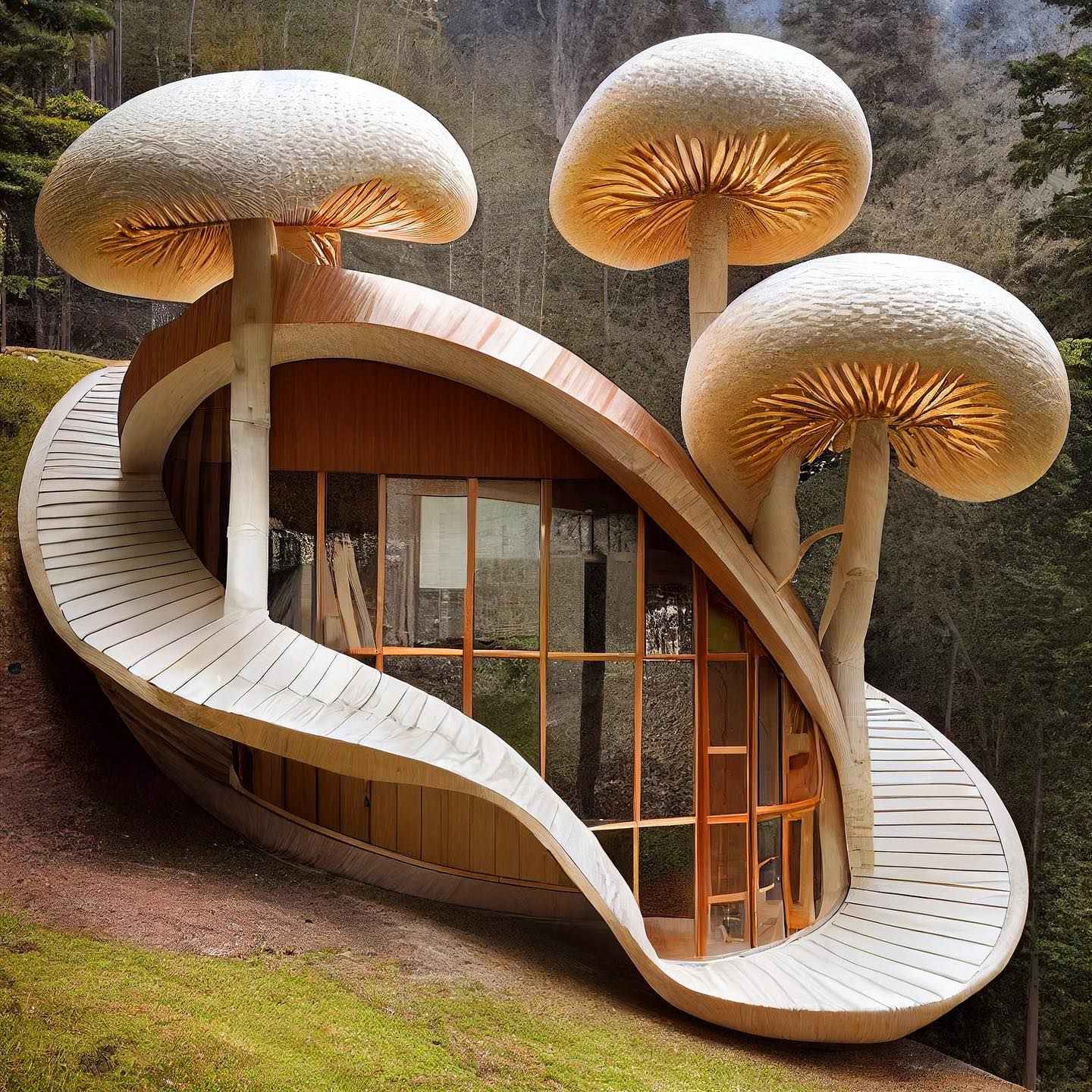 The energy-efficient features of the mushroom house also contribute to its sustainability. The curved roofs and open floor plans allow for better air circulation, reducing the need for artificial cooling and heating systems. This not only reduces energy consumption but also lowers utility costs for the occupants. Additionally, the use of natural materials helps to regulate the temperature inside the house, further reducing the need for artificial heating or cooling.
The energy-efficient features of the mushroom house also contribute to its sustainability. The curved roofs and open floor plans allow for better air circulation, reducing the need for artificial cooling and heating systems. This not only reduces energy consumption but also lowers utility costs for the occupants. Additionally, the use of natural materials helps to regulate the temperature inside the house, further reducing the need for artificial heating or cooling. 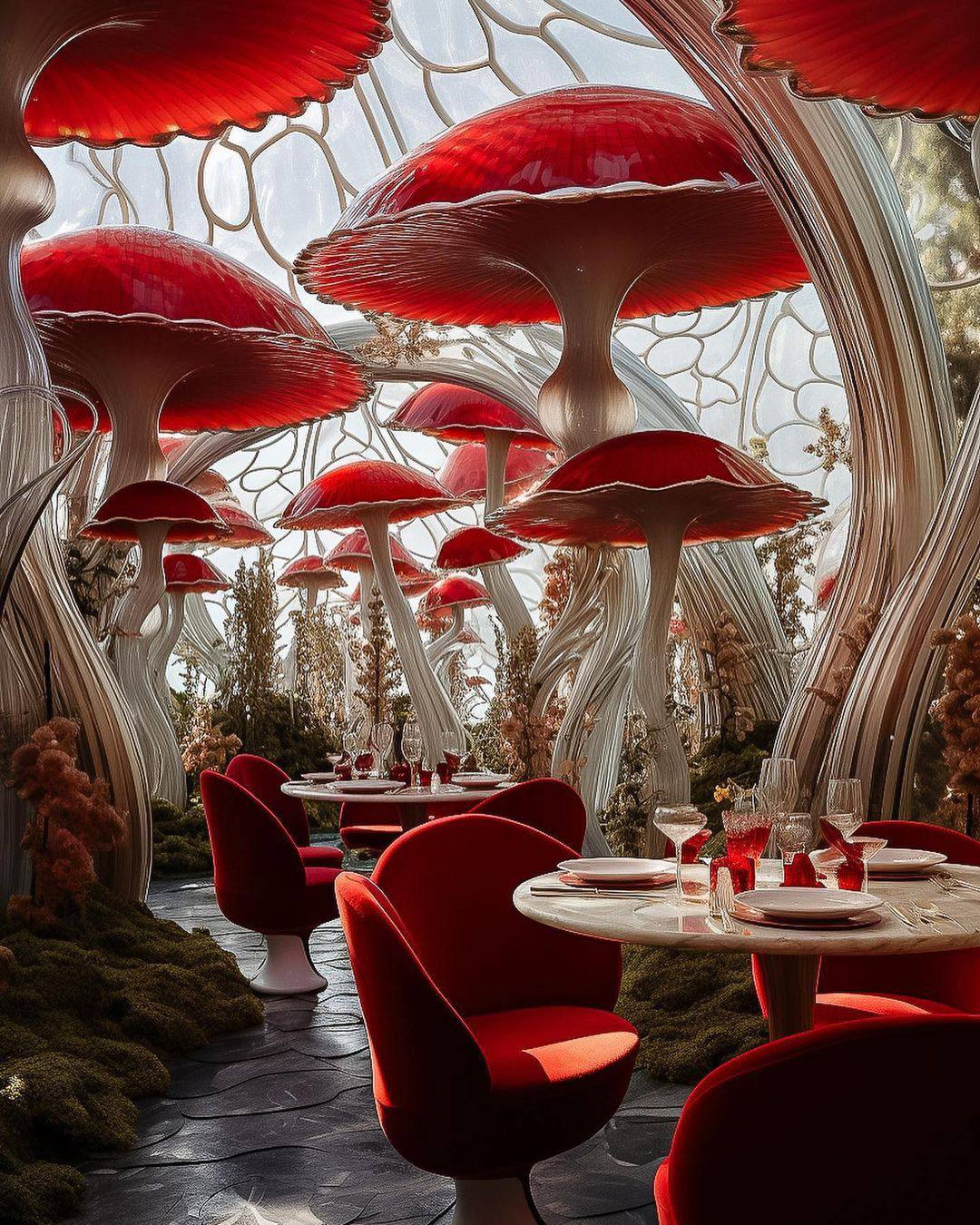
Read more: Crystal Kitchen Islands: Transforming Spaces with Elegant Inspirations
Future of the Mushroom House
As the world becomes more environmentally conscious, the demand for sustainable and eco-friendly housing options is on the rise. The mushroom house offers a unique and innovative solution to this growing demand, with its organic and sustainable features capturing the attention of designers and homeowners alike. In the future, we can expect to see more mushroom-inspired architectural designs as the concept gains popularity and evolves to meet the changing needs of society. 
 Moreover, the mushroom house serves as an example of how drawing inspiration from nature can lead to innovative and sustainable solutions in architecture. As we continue to face environmental challenges, it is crucial to look towards nature for inspiration and guidance in creating a more sustainable future.
Moreover, the mushroom house serves as an example of how drawing inspiration from nature can lead to innovative and sustainable solutions in architecture. As we continue to face environmental challenges, it is crucial to look towards nature for inspiration and guidance in creating a more sustainable future. 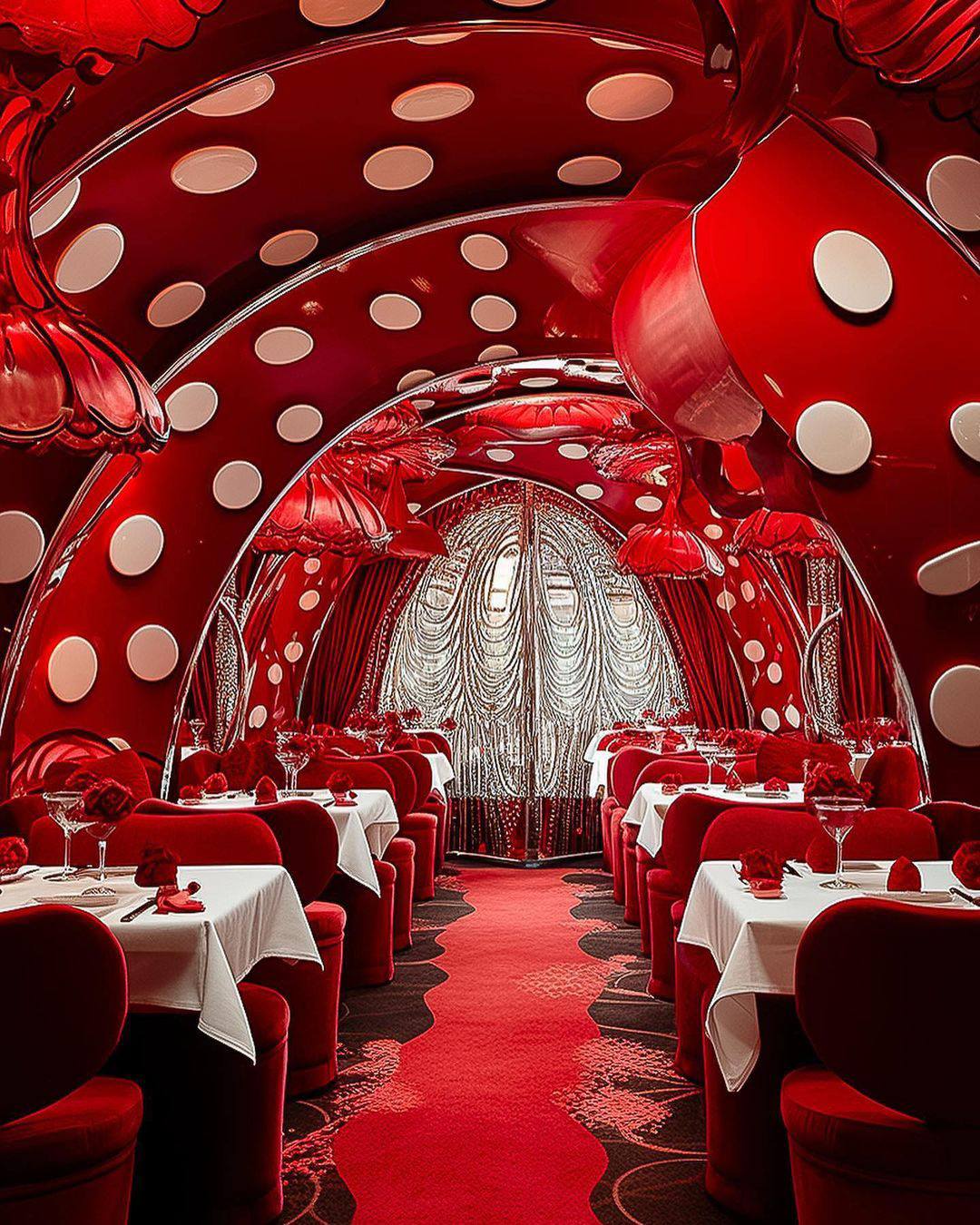
Conclusion
The mushroom house is a prime example of how architecture can be used to create a harmonious blend between humans and nature. By drawing inspiration from mushrooms, architects are able to create unique and sustainable structures that promote a deeper connection with the environment. With its energy-efficient features, flexible living space, and seamless integration with nature, the mushroom house is a testament to the endless possibilities of architectural design. As we continue to push the boundaries of traditional design, let us not forget the importance of sustainability and the significance of drawing inspiration from nature in creating a better world for future generations.
NOTE: All images in this post are AI-generated and intended solely for inspiration. These are not real products available for sale, and we do not operate any online store or website for purchases.
